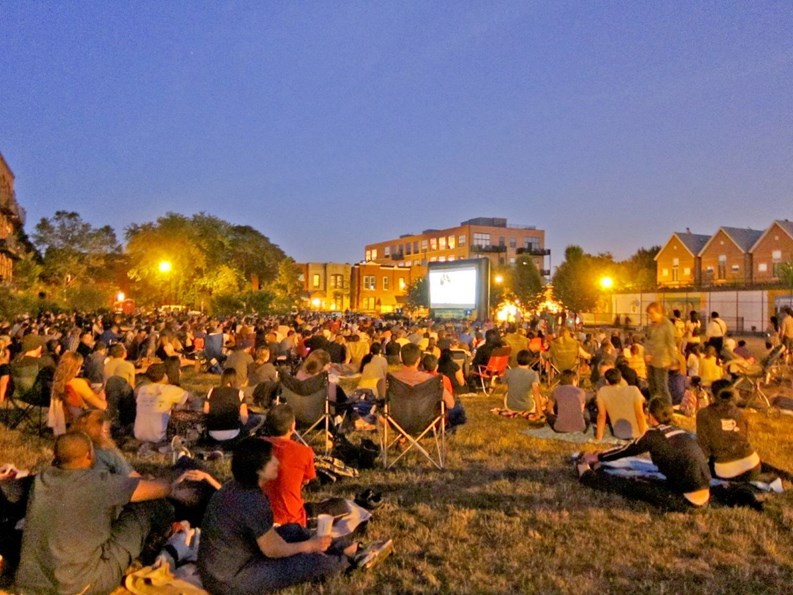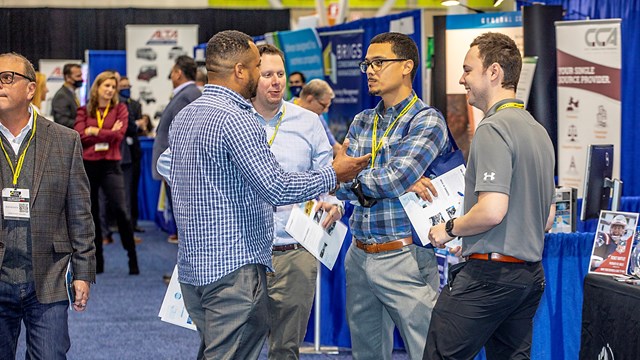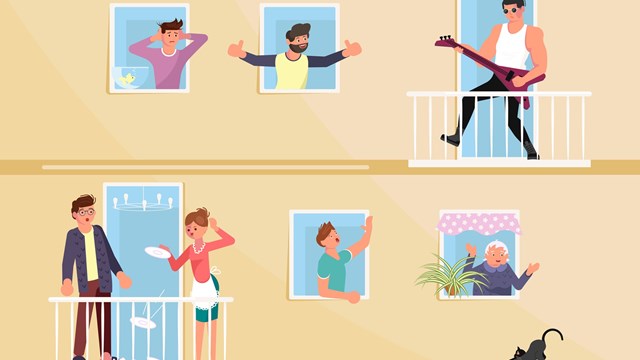Bucktown, a Polish neighborhood north of Wicker Park, has been transformed from an agrarian community into a residential haven with a mix of older single family homes and new condos with edgy architecture and converted industrial lofts.
Not a Billy Goat, but?
What is it about Chicago and goats? No offense to Mr. Wrigley, but Bucktown, curiously, gets its name from the large number of goats that were once raised in the neighborhood during the 19th century. That was when Bucktown was the center of the city's famed Polish Downtown. The original Polish term for the neighborhood was Kozie Prery (Goat Prairie). Located directly north of Wicker Park and northwest of the Loop, Bucktown is in the eastern end of the Logan Square community area in Chicago. Its boundaries are Fullerton Avenue to the north, Western Avenue to the west, Bloomingdale Avenue to the south, and the Kennedy Expressway to the east. Its original boundaries were Fullerton Avenue, Damen Avenue, Armitage Avenue and Western Avenue.
Not surprisingly, the neighborhood's origins are rooted in the Polish working class, which first began to settle in the area in the 1830s. A large influx of German immigrants arrived in 1848 and in 1854, they established the town of Holstein, which was eventually annexed into Chicago in 1863. The influx of Polish immigrants, the annexation of Jefferson Township into Chicago and the completion of the Logan Square branch of the metropolitan El train combined to influence the rapid increase in Bucktown's population density. Some of the Chicago’s most opulent churches designed in the so-called Polish Cathedral style—St. Hedwig's, the former Cathedral of All Saints and St. Mary of the Angels date from this era.
The Melting Pot
Many of Bucktown’s streets were named for famous citizens honoring their Polish heritage—people such as Polish noblemen and patriots Tadeus Kosciusko and Kazmierz Pulaski, the Sobieski royal family and Leipzig (for the Battle of Leipzig).
However, the City Council, prompted by a Bucktown-based German contingent with political clout, changed these Polish-sounding names in 1895 and 1913 to those of a more Teutonic flavor, calling them Hamburg, Frankfort, Berlin and Holstein. Anti-German sentiment during World War I reversed the name change to today's very Anglo-Saxon sounding names: McLean, Shakespeare, Charleston, and Palmer.
Between 1939 and 1959, an estimated 150,000 Poles arrived as “displaced persons” and established tight-knit microcosms of shops, delis, churches, restaurants and banks where everyone knew the language. Milwaukee Avenue was the anchor of the city's "Polish Corridor," a contiguous area of Polish settlement that extended from Polonia Triangle to Avondale's Polish Village. Additional immigrants that settled in the area at the time included European Jews and Belarusians.
Latino migration to the area began in the 1960s with the arrival of Cuban, Puerto Rican, and later Mexicans. Puerto Ricans in particular concentrated in the areas along Damen and Milwaukee Avenues right through the 1980s.
In the last quarter of the 20th century, a growing artists' community led directly to gentrification of the neighborhood bringing in large numbers of young professionals seeking an affordable place to call home. And, in recent years, many trendy taverns and restaurants have opened in Bucktown. There also have been a considerable number of "tear-downs" of older housing stock, which was followed by the construction of larger, upscale residential buildings, new luxury condos and converted lofts and brownstones.
Shopping, Art and Culture
While housing prices in Bucktown have risen in the last few decades as gentrification has changed the character of the neighborhood from working class and bohemian to more upwardly mobile, the old architecture still mixes seamlessly with more contemporary housing stock—so much so that the Bucktown neighborhood retains much of its original Old World charm.
Accessible from public transportation bus lines and the CTA Blue Line, Bucktown has a significant shopping district on Damen Avenue, extending north from North Avenue in Wicker Park to Webster Avenue. Chic boutiques, trendy restaurants and friendly and, still inexpensive, neighborhood bars line Damen Avenue from the neighborhood's northern Fullerton Avenue border to North Avenue on the south ending at the famous, if not infamous, Milwaukee/North and Damen intersection.
According to the Wicker Park Bucktown chamber website (www.wicker parkbucktown.com), an arts and cultural scene also flourishes here. Historically active arts organizations and venues include the Chopin Theater and the Flat Iron Artists Association. The Chopin Theater, built in 1918, at the Polish Triangle, has been home to innovative, international and award-winning theater for well over two decades. In the heart of the neighborhood, the Flat Iron Building has evolved into a collective of artist's studios, and the Flat Iron's 'First Friday' open gallery events add to the area’s cultural buzz.
The neighborhood is also host to many Chicagoland music, arts and food festivals each year, including the popular Bucktown Arts Fest held during last week end of August at Holstein Park, which provides an outdoor experience for artists, performers and artisans. In the fall, you can attend the Coyote show at the Flat Iron named for the iconic tower building across the street at the intersection of Milwaukee, North and Damen Avenues, whose likeness is that of a coyote howling at the moon. Other festivals to check out include Wicker Park Fest, Renegade Craft Fair, Milwaukee Avenue Arts Fest, and Out of Site Chicago.
The Renegade movement takes over Division Street the second weekend of September, with their cornerstone Renegade Craft Fair. They do it again the first weekend of December with the Renegade Holiday Craft Fair at the historic Pulaski Park field house in Wicker Park. Renegade has developed into an international phenomenon, producing not only marquee Chicago craft fairs, but also producing fairs in Austin, Brooklyn, Los Angeles, San Francisco, and even London, England.
Debra A. Estock is managing editor of The Chicagoland Cooperator.






Leave a Comment